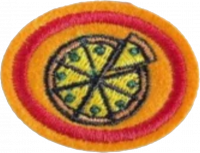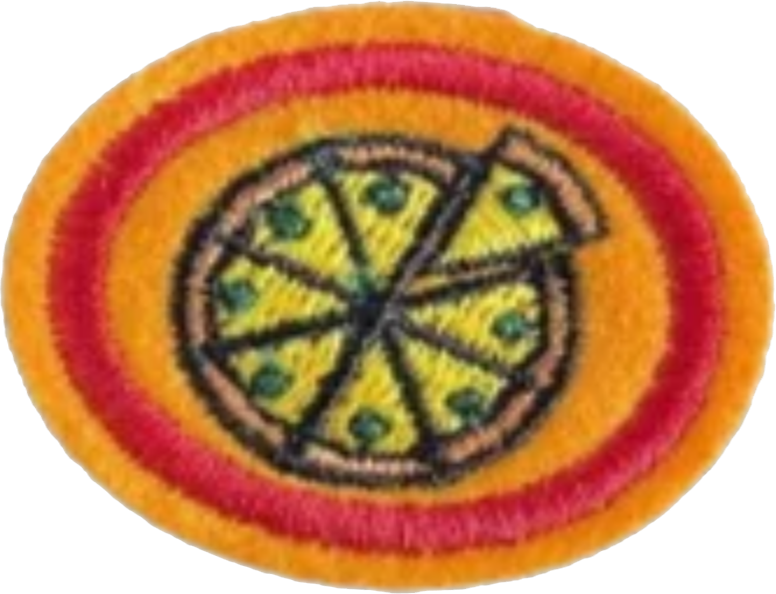Niveau d'aptitude
1
An
2025
Version
14.12.2025
Autorité approbatrice
Division Sud-Américaine
1
Although the word pizza was first documented in 997 AD in Gaeta and successively in different parts of Central and South Italy, the history of the dish itself is not very clear or well documented.
The precursor of pizza was probably the focaccia, a flat bread known to the Romans as "panis focacius", to which toppings were then added.
Foods similar to pizza have been made since the Neolithic age. Records of people adding other ingredients to bread to make it more flavorful can be found throughout ancient history.
In 16th century Naples a Galette flatbread was referred to as a pizza. Known as the dish for poor people, it was sold in the street and was not considered a kitchen recipe for a long time. This was later replaced by oil, tomatoes (after Europeans came into contact with the Americas) or fish. In 1843, Alexandre Dumas, père described the diversity of pizza toppings. An often recounted story holds that on 11 June 1889, to honor the Queen consort of Italy, Margherita of Savoy, the Neapolitan pizzamaker Raffaele Esposito created the "Pizza Margherita", a pizza garnished with tomatoes, mozzarella, and basil, to represent the national colors of Italy as on the Italian flag.
Pizza is now a type of bread and tomato dish, often served with cheese. However, until the late nineteenth or early twentieth century, the dish was sweet, not savory, and earlier versions which were savory more resembled the flat breads now known as schiacciata. Pellegrino Artusi's classic early twentieth century cookbook, La Scienza in cucina e l'Arte di mangiar bene gives three recipes for pizza, all of which are sweet. However, by 1927, Ada Boni's collection of regional cooking includes a recipe using tomatoes and mozzarella.
The innovation that led to flat bread pizza was the use of tomato as a topping. For some time after the tomato was brought to Europe from the Americas in the 16th century, it was believed by many Europeans to be poisonous (as are some other fruits of the nightshade family). However, by the late 18th century, it was common for the poor of the area around Naples to add tomato to their yeast-based flat bread, and so the pizza began. The dish gained in popularity, and soon pizza became a tourist attraction as visitors to Naples ventured into the poorer areas of the city to try the local specialty.
Until about 1830, pizza was sold from open-air stands and out of pizza bakeries, and pizzerias keep this old tradition alive today. It is possible to enjoy paper-wrapped pizza and a drink sold from open-air stands outside the premises. Antica Pizzeria Port'Alba in Naples is widely regarded as the city's first pizzeria.
2
The basic ingredients for pizza dough are:
- Flour
- Water
- Yeast
- Sugar (to activate the Yeast)
- Oil
- Salt
3
A leavening agent (also leavening agent or leaven agent; /ˈlɛvənɪŋ/ or /ˈlɛvən/), also known as a raising agent, is any one of a number of substances used in doughs and batters that causes a foaming action that lightens and softens the finished product. Formation of carbon dioxide is induced by chemical agents reacting with moisture, heat, acidity, or other triggers.
The leavening agent incorporates gas bubbles into the dough. The alternative or supplement to leavening agents is mechanical leavening by which air is incorporated by mechanical means. Most leavening agents are synthetic chemical compounds, but carbon dioxide can also be produced by biological agents. When a dough or batter is mixed, the starch in the flour mixes with the water in the dough to form a matrix (often supported further by proteins like gluten or other polysaccharides like pentosans or xanthan gum), then gelatinizes and "sets"; the holes left by the gas bubbles remain.
4
Roman pizza is thin and usually stretched with the help of a rolling-pin. It is baked for a longer time at a lower temperature. Neapolitan pizza instead is thicker and softer. It is formed by hand – that’s why its outer edge is also thicker. It must be cooked for a much shorter time.
5
In order, a Brick oven, wood fired or coal fired, is the best as described in the reference below, followed by a Grill so you are closer to a brick oven type of baking and then followed by a electric oven using a pizza stone to help simulate a brick oven.
1. Wood fired brick oven - Web Page Reference
2. Grill (Electric, Gas or Charcoal) - Web Page Reference
3. Electric or Gas oven (Home or Industrial) - Using a pizza stone will help to more evenly distribute the heat to the pizza in a Home oven, so you get closer to a brick oven type of baking.
6
Wood or Brick Oven 400°C / 752°F
Home ovens 280°C / 450°F to 500°F
Industrial ovens 330°C / 626°F
7
It’s made with tomato sauce and cheese and topped with tomatoes and basil. The type of each ingredient can vary, such as the type of tomato sauce used, the type of tomatoes used as well as the type of basil used. Experiment and research different types and see what others use and what you like best.



